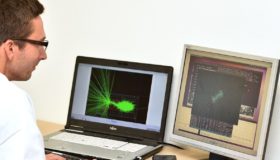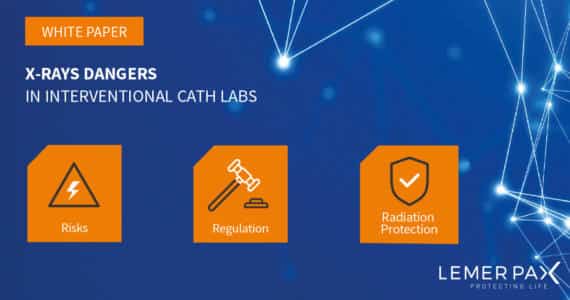Radioactivity in question

Radioactivity in question
Types of radiation and their penetration power
- Helium core: the alpha emission can be stopped by a simple sheet of paper
- Electron: the beta emission can be stopped by a few millimetres of aluminium
- Gamma: Gamma radiation can stopped by a few dozen of centimetres of concrete or several centimetres of lead
Radiation measurements and units
– Becquerel (Bq)
The activity of a radioactive source is expressed in Becquerel. It designates the number of decays of unstable nuclei per second.
– Gray (Gy)
The dose received is expressed in Gray. A Gray designates the dose of ionizing radiation absorbed by the matter.
– Sievert (Sv)
Effective dose and equivalent dose are expressed in Sievert. The Sievert designates the biological effects of ionizing radiation on living matter.
Effective dose and equivalent dose
- Absorbed dose D (Gy): The absorbed dose is the amount of energy absorbed per unit of mass. It is expressed in Gray (1 Gray=1J/kg)
- Equivalent dose H (Sv): The equivalent dose is equal to the absorbed dose multiplied by the weighting factor, which depends on the type of radiation.
- Effective dose E (Sv): The effective dose is equal to the equivalent dose multiplied by the tissue weighting factor.
Few figures
- 10,000 Bq = Natural radioactivity of a 70kg man
- 4.6 mSv/year = Average exposure of the French population
- 15 Gy = Lethal dose in the event of whole body exposure
Examples of doses received
- 0.001 mSv = Annual exposure in France related to the nuclear industry
- 0.034 mSv = Cosmic radiation doses during a Paris/Dallas flight
- 0.1 mSv = Chest X-ray
- 0.5 mSv = Additional exposure due to a 3-month stay in a granitic region
- 1 mSv = Average medical radiation exposure of the population in France
- 2 mSv = Cosmic radiation exposure of aviation aircrew
- 12 mSv = Abdominal and pelvic CT scan
- 50 mSv = Average dose received in 1986 by a person residing 30km from Chernobyl
Source: ASN / IRSN / CIPR









